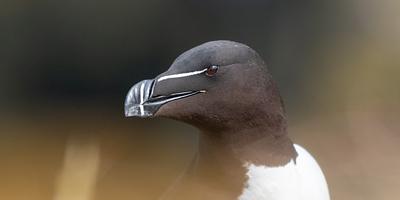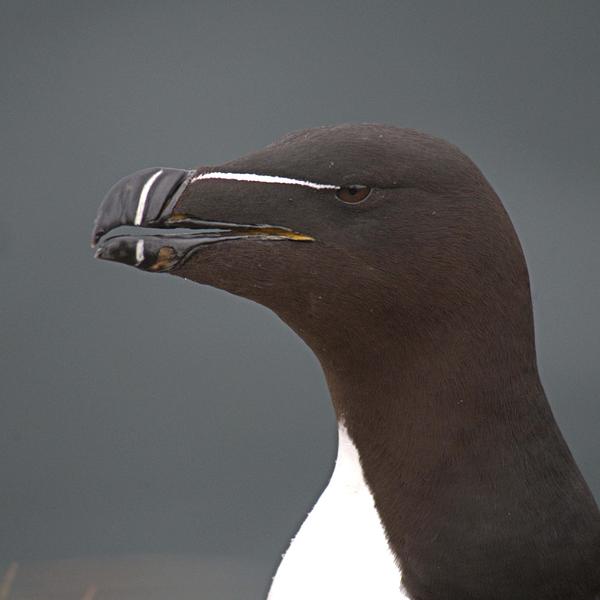
Razorbill
Alca torda
What do they look like?
A medium-sized auk, razorbills are black across their head and back, with a white underside throughout the summer months. Similar to the common guillemot in size and shape, they can be distinguished by their stocky, wedge-shaped bill which sports a thin white stripe from top to bottom. During the winter, their white plumage extends upwards onto the underside of their face and neck.
When can I see them in Scotland?
All year.
Where can I see them in Scotland?
Although you may spot them from vantage points around the coast throughout the year, razorbills are best spotted at breeding colonies between March and July. They nest in colonies alongside other seabirds, but often choose the lower lying ledges or outcrops.
Conservation Status:
In the UK, bird species with breeding, passage or wintering populations are assessed by experts and assigned to the Red, Amber or Green lists of conservation concern. Razorbills are currently an ‘AMBER’ listed species.

- Header Image (c) Jamie McDermaid
- Listing Image (c) Emily Burton
